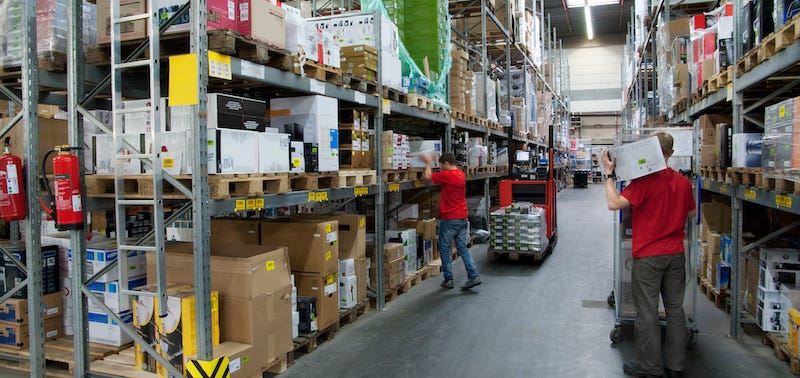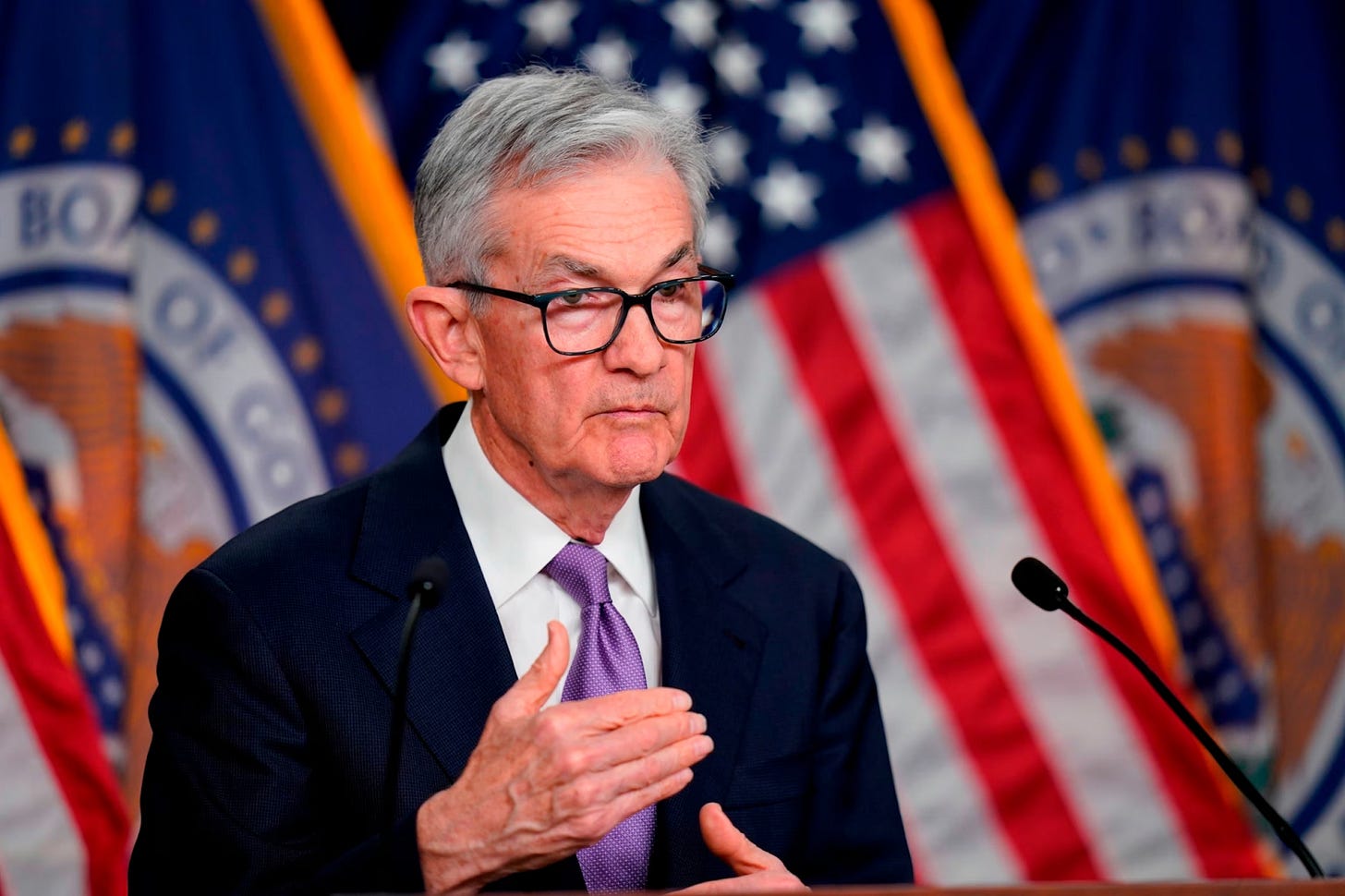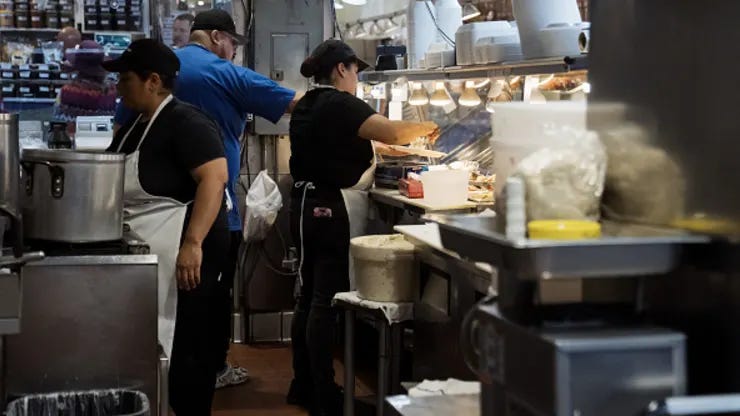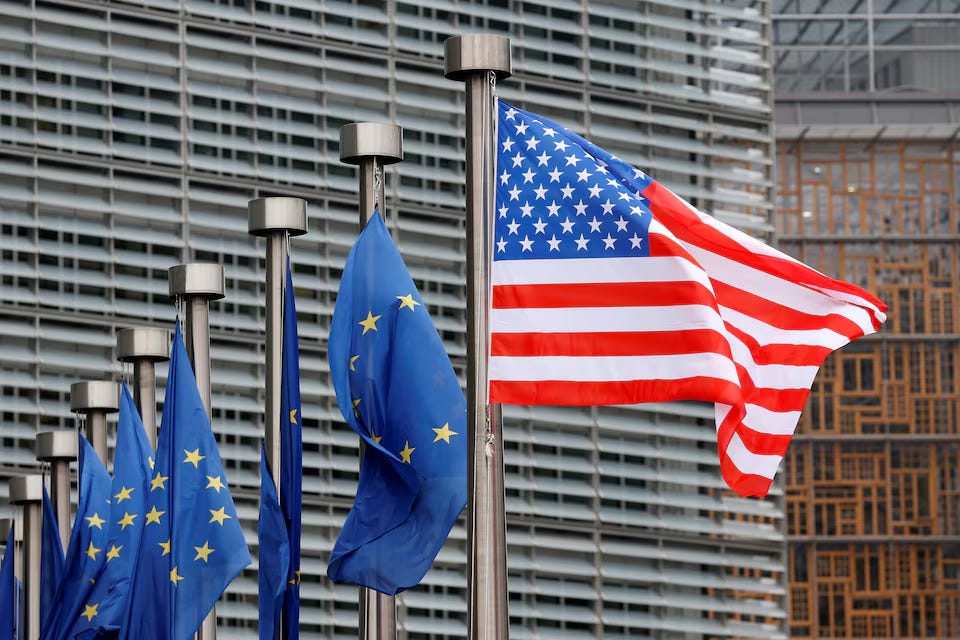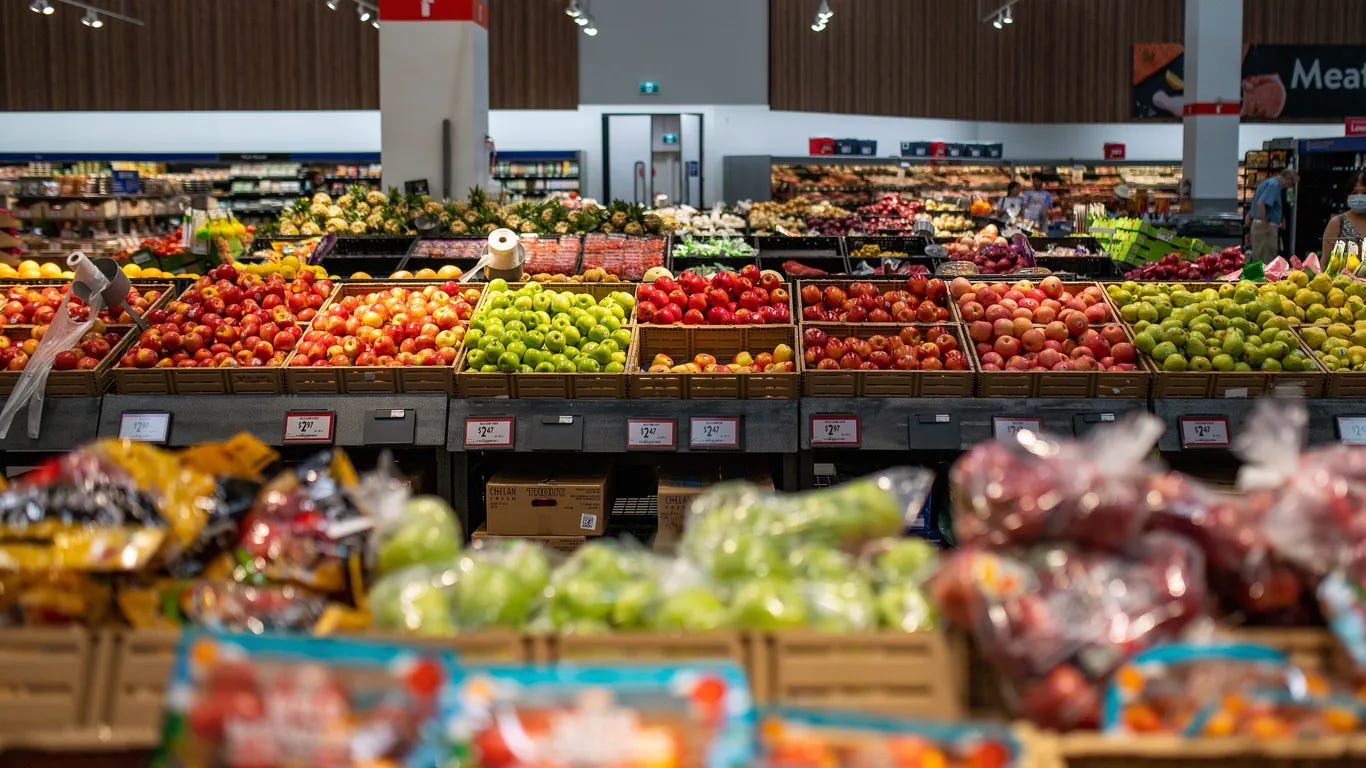Newsletter #1
Check out our first newsletter featuring stories about inflation, new deals, interest rates, and more!
Dear Reader,
Welcome to the first edition of The Economic Literacy Initiative Newsletter! We aim to bring you short insightful analyses of current economic events and their significance to you. Enjoy the read!
Rising Wholesale Inflation in February
Image Source: U.S. Wholesale Inflation Again Topped Expectations in February - Modern Distribution Management (mdm.com)
Summary: February saw an unexpected surge in wholesale prices in the US. Wholesale is when businesses buy goods in large quantities from manufacturers, store them, then sell them again to other businesses or consumers. An increase in wholesale prices, which is signified by the increase in the producer price index– a tracker for prices that producers receive for their products– means that businesses have to spend more to store goods which translates to customers having to pay more for their wants and needs.
Consumer Analysis: While retail sales did rise slightly by 0.6%, they fell short of expectations, showing that consumers may be feeling the pinch of rising costs and tightening their budgets. With inflation outpacing retail sales growth, people may find it increasingly challenging to afford essential items, leading to potential shifts in spending habits. This shows the importance of monitoring economic indicators as they directly impact consumer purchasing power, household budgets, and the broader market.
Source: Producer price index February 2024: Wholesale inflation rose 0.6% in February (cnbc.com)
Increased Consumer Spending in February
Summary: Retail sales data showed a slight increase of consumer spending in February, but the gain was smaller than expected. For now, investors and economists think that the market could still bounce back and the overall economy will be fine because of wage increases and increasing levels of employment. The loss in January was only expected to be 0.3%, but was 0.4% which while seemingly small is significant, but it is extremely relevant because each 0.1 percent accounts for hundreds of billions or even trillions of dollars.
Consumer Analysis: In the long run this decline could be a sign that Americans are starting to cut back on spending due to inflation. Consumer spending is a major driver of economic growth; when consumers feel confident about the economy and their job security, they are more likely to spend money, which boosts businesses and creates jobs. On the other hand, if consumers are worried about inflation or a potential recession, they tend to spend less. Tracking consumer spending helps us understand the overall health of the economy and predict future trends. This story specifically signals the importance of employment and wage increases as they not only are needed for living individually, but contribute to consumer spending which is an important metric to see the effects of things like inflation.
Source: Consumer spending rebounded in February, according to the CNBC/NRF Retail Monitor
Federal Reserve Keeps Interest Rates Steady
Image Source: Fed leaves interest rates unchanged, delaying anticipated rate cuts - ABC News (go.com)
Summary: Federal Reserve Chair Jerome Powell announced the bank is leaving interest rates unchanged for now. This is a show of monetary policy. Monetary policy refers to the tools used by a central bank (like the Federal Reserve) to influence the economy. One tool is setting interest rates. By raising interest rates, the Fed aims to slow down borrowing and spending, which can help to curb inflation. Conversely, lowering interest rates encourages borrowing and spending, stimulating economic activity during slowdowns. Understanding how the Fed uses interest rates helps people make informed financial decisions and navigate economic cycles.
Consumer Analysis: Thus with steady interest rates the Federal Reserve is undeterred by the ever growing stirs of inflation and signals that to the rest of the economy as well. Consumers should feel comfortable investing and participating in the economy, but should always be aware of possible incoming volatility. Especially, be on the lookout for the 3 predicted rate cuts, this year with the first expected to be in June. When interest rates are cut it is some of the best time to invest, with especially high profit margins, so keep up with this newsletter for that key information.
Source: Federal Reserve holds interest rates steady, maintains forecast for 3 rate cuts in 2024 (yahoo.com)
New US Jobs
Image Source: CNBC Daily Open: A mixed picture on U.S. jobs growth
Summary and Consumer Analysis: The US economy added more jobs than expected with an addition of 275,000 jobs in February. This is a positive sign for economic growth, but the unemployment rate rose slightly, which suggests some complexities in the labor (job) market. This represents employment rate and job growth. A strong job market with a lower amount of unemployed people can hint to a growing economy which is helpful for everyone even if you’re not trying to find a job. Wages and household spending can also be positively affected; if job markets are booming, that means better wages which leads to happier households. And, these new jobs may also play into the upcoming election, as jobs are both huge platforms for both parties and their front-running candidates.
China New GDP Growth Target
Image Source: Two Sessions: China sets GDP target of ‘around 5%’ for 2024, vows to ‘transform’ economy | CNN Business
Summary: China is aiming for economic growth of around 5%. To achieve this, they’re planning to issue special bonds, including “ultra-long” ones, to finance major projects like infrastructure development. Premier Li Qiang also intends to ease restrictions on foreign investment in manufacturing, hoping to attract more outside companies to invest in China’s industries. To manage their finances, China plans to keep their deficit (the amount of money they borrow compared to the size of their economy) at 3% of their GDP. They will issue 1 trillion yuan (around 138 billion usd) of “ultra-long” special treasury bonds for national projects and an additional 3.9 trillion yuan(about 500 billion usd) of special-purpose bonds for local governments.
Consumer analysis: Ultra-long and special bonds are loans that investors give to the government for an unusually long time (50 years for example). In return, investors get paid back the loan amount plus interest over this extended period. These measures aim to support economic growth and enhance the effectiveness of the government's plans. Despite facing challenges from the pandemic, China remains focused on maintaining growth, and as long as China grows, it's safe to assume we will continue to see products made from China in our shopping carts. And as a major world power, China's success means lower prices for consumers in the US in the form of lower import costs which leads to cheaper products at the store.
Source: China sets GDP target of 'around 5%' for 2024 (cnbc.com)
Shipping Delays Hurts Global Supply Chains
Image Source: Why the global supply chain is about to get a whole lot worse (fastcompany.com)
Summary: Global supply chains are facing tough challenges, causing disruptions that affect consumers in many ways. These disruptions happen because of things like low water levels in the Panama Canal and conflicts in the Red Sea area, which make shipping harder and more expensive. This means delays in getting products to stores and higher prices for things like food and electronics.
Consumer analysis: For most people, this can mean trouble finding certain foods at the store or paying more for everyday items. Fresh fruits and veggies might be harder to come by, and things like electronics could cost more because of delays in getting them shipped. But companies are working to make supply chains stronger and more flexible. They’re finding new ways to get products where they need to go and investing in tech to get things to run smoother. By doing this, they hope to make sure we can all get things we need without a lot of hassle, even when supply chains face tough times.
Key Example: The recent Baltimore Key Bridge collapse serves as a great example of how supply chains can adapt in times of crisis. The bridge now lies partially submerged in the Patapsco River after a cargo ship collision. The ship and mangled debris from the bridge have formed a wall in the water, indefinitely blocking access in and out of the Port of Baltimore. However, Baltimore’s strategic location as the furthest inland port allows companies to reroute shipments to other ports, limiting overall consequences. Over the last decade, Baltimore has invested in infrastructure, enabling it to handle substantially larger ships than other East Coast ports. While the federal government plans to rebuild the Key Bridge, companies are already exploring alternative routes and diversifying their supply chains to mitigate future risks.
Source: Canal disruptions and shipping delays impact supply chains (mckinsey.com)
US and EU Mineral Deals
Image Source: EU, US seek broader reach on critical minerals as own deal stalls | Reuters
Summary: The United States and the European Union (EU) have teamed up to address China’s dominance in critical minerals, essential for future technologies. President Biden and President Von Der Leyen (head of European Commission) affirmed their commitment to clean energy economies and stable supply chains in March 2023. Then, in June the European Commission adopted guidelines for a Critical Minerals agreement with the US, focusing on materials needed for electric car batteries. This aims to diversify supply chains and reduce reliance on one source. They’re negotiating the Critical Minerals Agreement to include minerals from the EU in US clean vehicle tax credit rules. Clean vehicle tax credit rules are incentives given by governments to encourage people to buy eco-friendly cars like electric or hybrid vehicles. Negotiating the Critical Minerals Agreement involves deciding if minerals from the EU can qualify for these incentives when used in making electric car batteries in the US.
Consumer Analysis:This partnership is important for everyone because it affects the stuff we buy. If there’s not enough of these minerals, it could mean less availability of things like electric cars or smartphones, and prices could go up. So by collaborating, the EU and US are trying to make sure we can keep getting these things with minimal problems and less influence with China. If the deal goes well this could mean less dependency on China on key minerals that will drive our future.
Source: EU, US to Collaborate on Global Minerals Push to Counter China’s Dominance - Bloomberg
Rising Food Prices
Image Source: Global food prices rise for first time in a year, United Nations food agency says (axios.com)
Summary: Food prices are on the rise worldwide, putting pressure on household budgets and raising concerns about food security. Access to high quality and a sufficient amount of food can be affected by: environmental factors (droughts, natural disasters), and social factors like poverty. Food inflation and the rise of prices disproportionately affects low-income households. Low-income families facing poverty have less money to spend but face rising prices, so their income and purchasing power decrease or remain the same while food prices and the overall cost of living rise. This is just one way that food insecurity can become prevalent in families. Another is environmental factors directly affecting food. For example, in Brazil frost damage has reduced the supply of sugar, however the demand for sugar has remained high so naturally prices will rise and pose a big financial challenge to people who are dependent on sugar and other similar crops.
Consumer Analysis: Understanding how your personal budgets are affected by rising prices in food and other needs/wants is an important step to becoming more financially and economically secure. These rising prices show the importance of economic literacy not just financial literacy because with an understanding of economics you are better able to adapt your budgets according to rising food prices.
Sources: Why has food become so expensive? An economist explains | World Economic Forum (weforum.org)
Why is the cost of food prices rising? | World Economic Forum (weforum.org)
_____________________________________________________________________
Key Terms
Wholesale - when businesses buy goods in large quantities from manufacturers, store them, then sell them again to other businesses or consumers.
Inflation - a measure of how quickly prices are increasing over time. Or, how fast money loses its purchasing power
Purchasing power - the value of a currency expressed in terms of the number of goods or services that one unit of money can buy.
Consumer spending - total spending on final goods and services for personal or household use
Monetary policy - the tools used by a central bank to influence the economy, often interest rates and or changing bank reserve requirements.
Gross Domestic Product(GDP) - the total monetary or market value of all the finished goods and services produced within a country’s borders in a specific time period.
Ultra-long and special bonds - loans that investors give to the government for an unusually long time (50 years for example)
Global supply chain - the worldwide system a business uses to produce products or services.
We’ve explored how current economic events affect us all. Stay tuned for more insights in next week’s newsletter!


